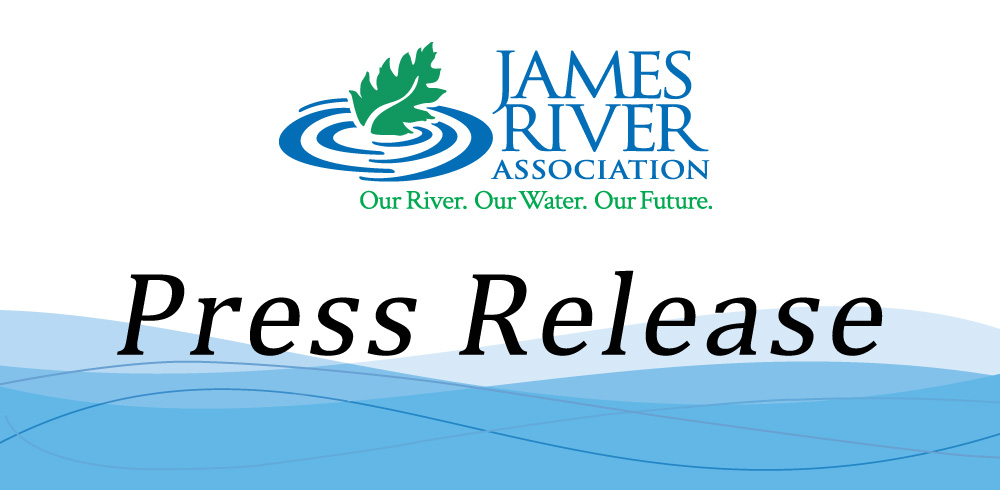Press Release from Southern Environmental Law Center and James River Association
For Immediate Release: Wednesday, November 14, 2018
Contact: Claudine McElwain, Southern Environmental Law Center cmcelwain@selcva.org, 434-977-4090
Christina Bonini, James River Association, cbonini@jrava.org, 804-788-8811 x211
Health Risks Found at Dutch Gap Conservation Area Due to Chesterfield Coal Ash
A new report finds that pollution coming from the Chesterfield Power Station may be leading to an increased health risk for some visitors to the nearby Chesterfield County Dutch Gap Conservation Area. Approximately 15 million tons of coal ash, a byproduct of burning coal that contains large amounts of heavy metals and other toxic pollutants, is stored in two unlined basins at the Chesterfield Power Station, in close proximity to the James River and the popular recreational park.
“This study further reinforces what I’ve said all along, this coal ash pollution must be moved away from our rivers and natural areas and away from public parks and floodplains,” said Virginia State Senator Amanda Chase. “Leaving this pollution in place is not only a public safety issue but a ticking time bomb that will cost the Commonwealth billions in clean up in the long run. Virginia is the only state in the Southeast not excavating coal ash. Leaving coal ash in place puts Virginians at risk of cancer and is not an option.”
The report, prepared by Terra Technologies Environmental Services, focuses on areas in the public park suspected of coal ash contamination that are easily accessed by recreational visitors hiking, fishing, or boating. More than 200,000 people visited the Dutch Gap Conservation Area in 2017, according to visitation data collected by Chesterfield Parks and Recreation. Examining sediment and surface water sampling performed in the park, as well as Dominion’s own groundwater monitoring data, the report concludes that “there are elevated noncancer hazards and cancer risks for recreational visitors who interact with areas where contamination from the coal ash ponds is migrating into Dutch Gap Conservation Area.” The report goes on to state that within these contaminated areas, cancer risks may be up to 10 times higher than the upper limit of what EPA considers “acceptable” cancer risk from polluted sites, and nearly 1,000 times higher than target risk levels. The conclusions of the report “indicate that the coal ash ponds at Chesterfield need remediation to stop the flow of coal ash contamination off-site into the Dutch Gap Conservation Area and, at a minimum, more work is needed to fully understand the risks throughout the park.”
“It is time to move beyond this claim that there is no health or environmental risk at Chesterfield,” said Nate Benforado, attorney at the Southern Environmental Law Center. “This report raises some serious red flags about the long-term safety of leaving ash in leaking, unlined pits next to a popular park.”
This study outlining the health risks to visitors at Dutch Gap from Dominion’s coal ash is further reinforced by a prior expert’s review of the hydrology at Chesterfield. “That analysis confirms that groundwater contaminated by the coal ash with arsenic, boron, cobalt, radium, and other pollutants, is flowing directly into the surrounding surface waters. Results from Dominion’s groundwater monitoring wells also closely track the elevated results observed in the surface water samples analyzed for this study.
“The risk assessment analysis takes a focused look at potential harm to recreational users,” said Jamie Brunkow, the James Riverkeeper at the James River Association. “At this point, the data is very clear that the coal ash ponds are leaking into an active river system, and this report shows that those leaks are likely putting certain visitors’ health at risk while threatening local habitat and wildlife.”
The Southern Environmental Law Center and the James River Association sent the report to the Virginia Secretary of Natural Resourcesand various other state and local officials.
###
The Southern Environmental Law Center is celebrating its 30th anniversary this year. With nine offices across the region (Charlottesville, VA; Chapel Hill, NC; Atlanta, GA; Charleston, SC; Washington, DC; Birmingham, AL; Nashville, TN; Asheville, NC; and Richmond, VA), SELC is widely recognized as the Southeast’s foremost environmental organization and regional leader. SELC works on a full range of environmental issues to protect the South’s natural resources and the health and well-being of all the people in our region. www.SouthernEnvironment.org
The James River Association is a member-supported nonprofit organization founded in 1976 to serve as a guardian and voice for the James River. Throughout the James River’s 10,000-square mile watershed, the James River Association works toward its vision of a fully healthy James River supporting thriving communities. With offices in Lynchburg, Richmond and Williamsburg, the James River Association is committed to protecting the James River and connecting people to it. For more information visit www.jamesriverassociation.org.

